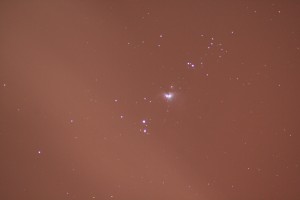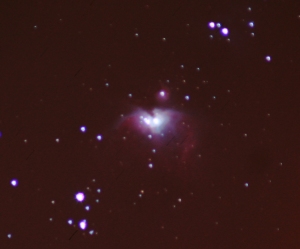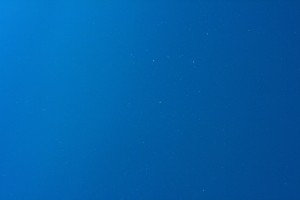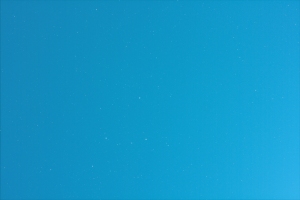Orion now rises above the houses round the back of my house at about nine in the evening. Over the course of the next 6 or 7 hours, it then arcs over the lamppost the council kindly installed. So I thought tonight would be a fantastic opportunity to test my Asstronomik CLS filter which filters out wavelengths of light given out by most street lighting in urban areas. With my tripod, Astrotracs (polar alignment now sorted out), and Canon 400D with 300mm f4 Nikon lens, setup was complete by midnight, at which point I started taking 30 second exposures using DSLR Pro’s time-lapse feature on my laptop. Nikon lens was openned up to max f4 and focus was a little bit back from infinity. I took 51 shots at ISO 1600, with 16 darks. I also took 18 shots at ISO 800, but I found that after stacking in DeepSkyStacker the 1600 gave noticably more detail. So this final image is from the ISO 1600 batch. Also when converting to 16bit mode in photoshop I chose to Equalise the Histogram. Did the usual series of levels and curve tweaks for each of the channels.
















